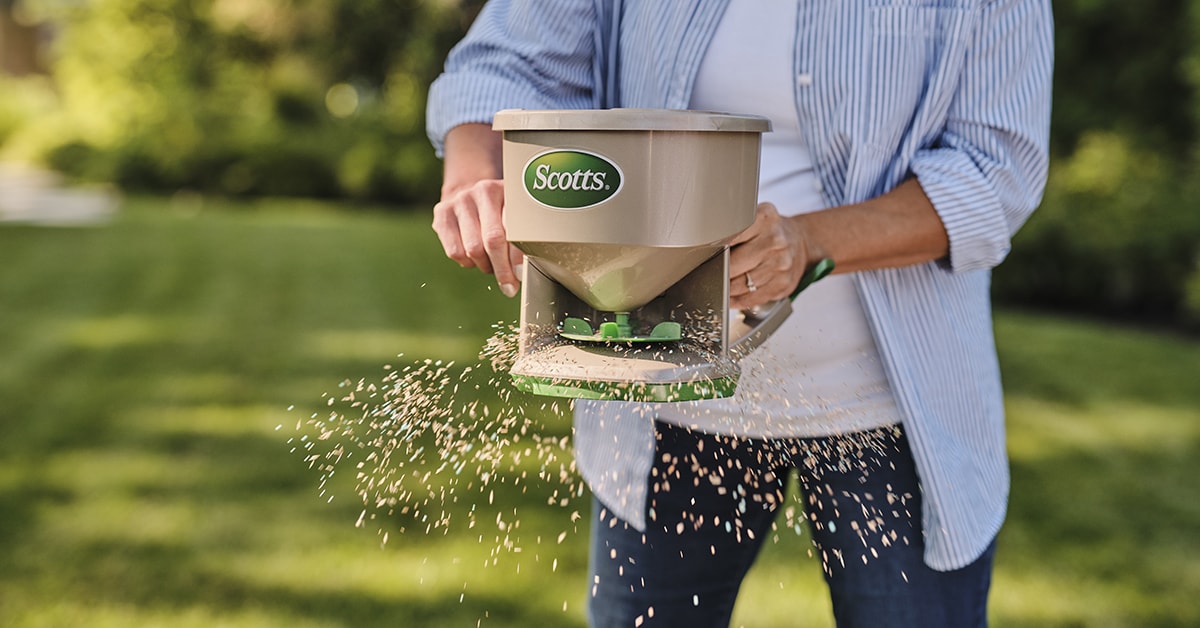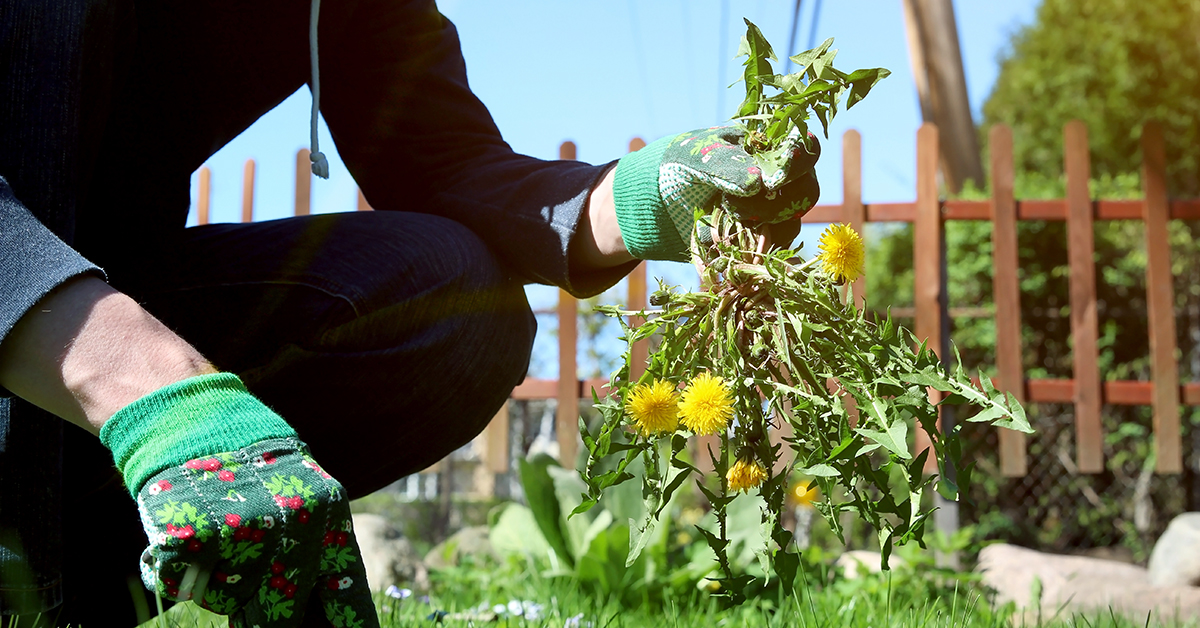
Published on December 22, 2023
Top Tips for Weed Control and Prevention
Nothing puts a damper on summer fun like weeds in your lawn, flowerbeds, or vegetable garden! Find out everything you need to know for a weed-free lawn—from which herbicide to choose to eco-friendly control and prevention ideas to lawn care tips—and the grass will be greener in no time.
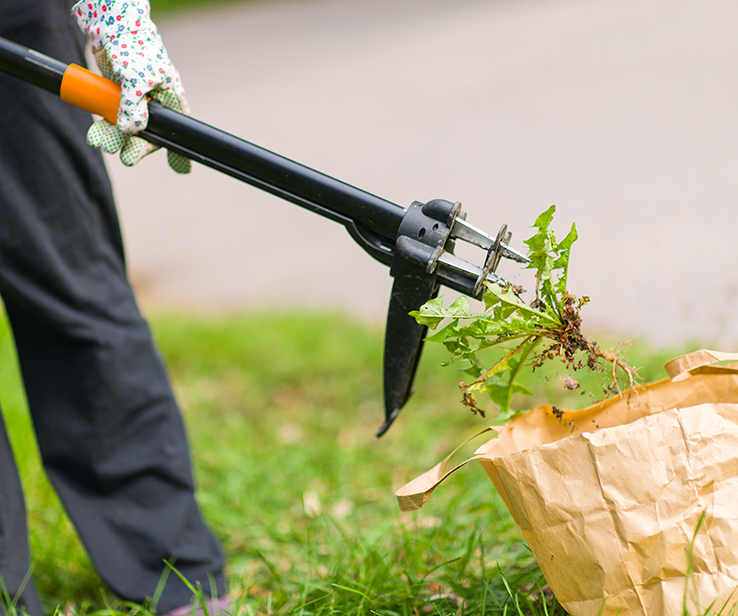
Manually Remove Weeds from Your Lawn
Get Rid of Weeds in 3 Easy Steps Using an Herbicide
1Examine Your Lawn
2Find the Perfect Treatment
- Pre-Emergent: More of a preventive tool, these herbicides are best for weeds that haven’t grown yet. Pre-emergent herbicides create a chemical barrier on the top layer of soil which coats seeds and prevents them from growing roots.
- Post-Emergent: Use this herbicide to kill weeds once they’ve germinated and started growing. Post-emergent herbicides are applied directly to the weeds and will kill the plant from the root.
If you notice the lawn browning suddenly, you may have applied too much herbicide. In this case, water the area extensively as soon as possible to dilute the product and keep it from further damaging your lawn.
Pro Tip
For best results, apply the herbicide in the morning after the dew has dried. If you wait until late afternoon, dew or a shower may prevent maximum absorption. Also make sure the soil is slightly moist before applying the herbicide; if not, simply water the area extensively the day before treatment.
Note that post-emergent herbicides work best when temperatures are between 16-32°C. These higher temperatures cause the plants to absorb the herbicide quickly; if the temperatures are too cool or weather conditions are too cloudy, the product is likely to be ineffective.
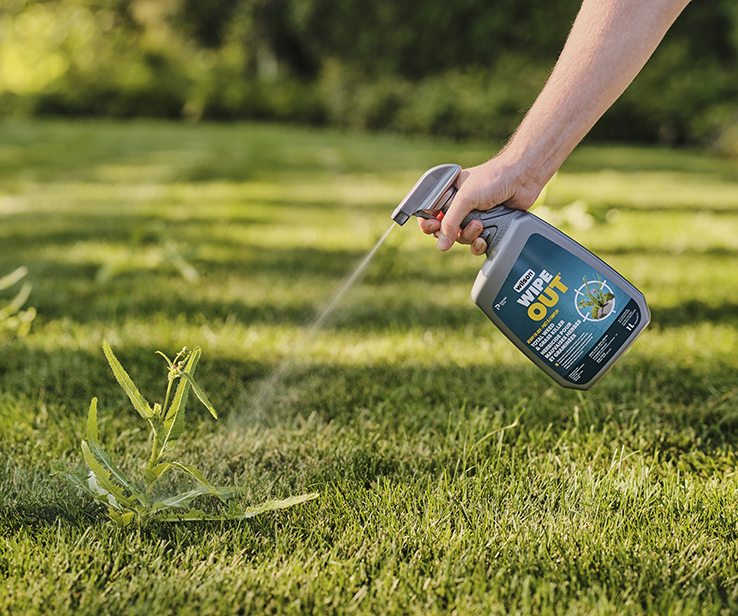
3Kill the Weeds
Try Using a Homemade Weed Killer
Here are 2 DIY options to get rid of young, newly emerged weeds: However, make sure to avoid ornamental and edible plants in both cases, as they could also be killed or damaged.
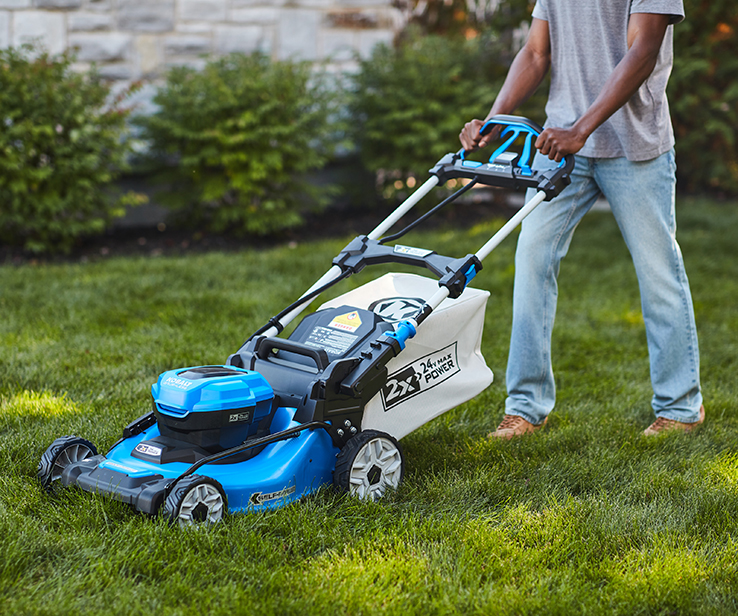
Ensure Proper Lawn Maintenance
- Spring: Use pre-emergent treatment and hand pick any weeds.
- Summer: Mow your lawn regularly.
- Fall: Seed and aerate your lawn.
- Winter Prep: Give your lawn a short cut and fertilize treatment.
Eco-Friendly Weed Prevention Ideas
Here are our best tips to create a landscape that can resist weeds and pests on its own, reducing your need for pesticides:
- Match Grass and Plants with Growing Conditions. Seek out grass and plant varieties that adapt well to your conditions. If a plant is struggling to stay alive, it will be more likely to be overpowered by weeds.
- Mulch, Mulch, Mulch. Adding organic mulch (wood chips, leaves, straws, crushed plant remnants, grass cutting, etc.) around plants is an effective and eco-friendly way for weed control.
- Add Ground Cover Plants. By concealing the ground, creeping plants inhibit weed growth.
- Fertilize. Help your plants thrive so that weeds don’t have room to grow!
- Avoid Bare Spots. Fill unused beds or patches with grass or plants before the weeds have the chance to move in!
- Reduce Lawn Space. The greater the lawn, the more herbicides, pesticides, and water you will need to use. This is why a smaller lawn space is more environmentally—and economically—friendly.
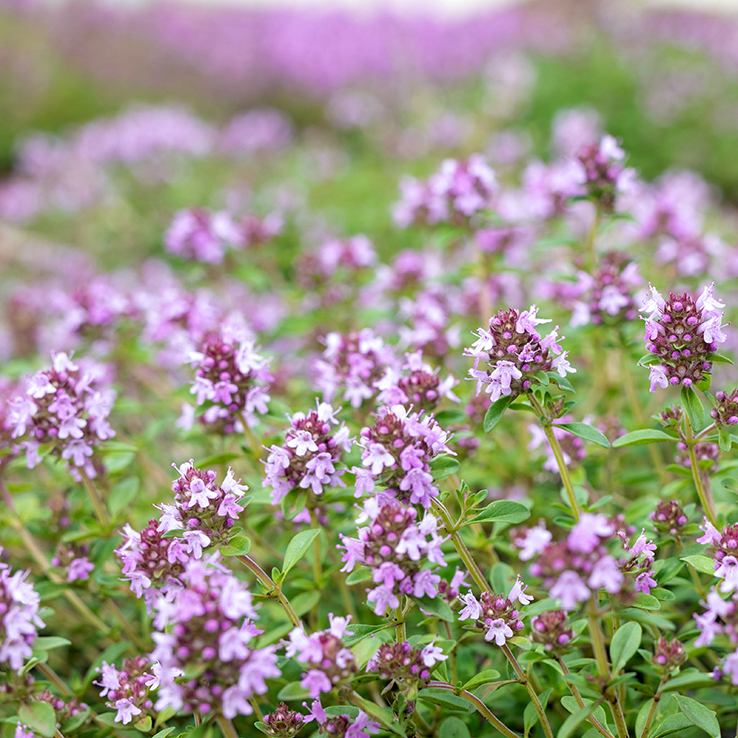


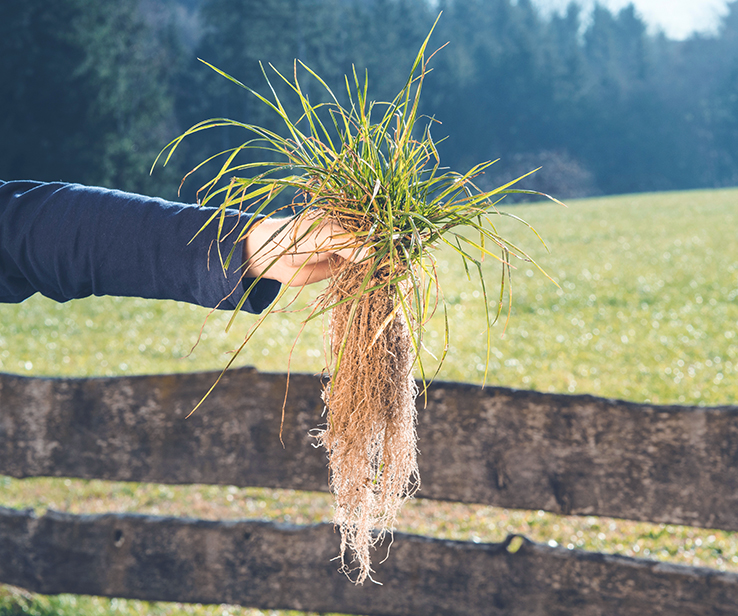
Crabgrass: Your Lawn’s Worst Enemy
- Mowing. Crabgrass requires plenty of light to germinate, so keep the grass as thick and long as possible to create shade near the soil surface. Mow at frequent intervals to keep the grass at a consistent length.
- Watering. Make sure your lawn never dries up. In an established lawn, water in long, heavy intervals rather than shallow, frequent ones. Watering on an irregular schedule and only when needed promotes deeper root growth that’s essential to healthy turf grass.
- Fertilizing. Fertilize your grass at least once a year, following the package instructions.










